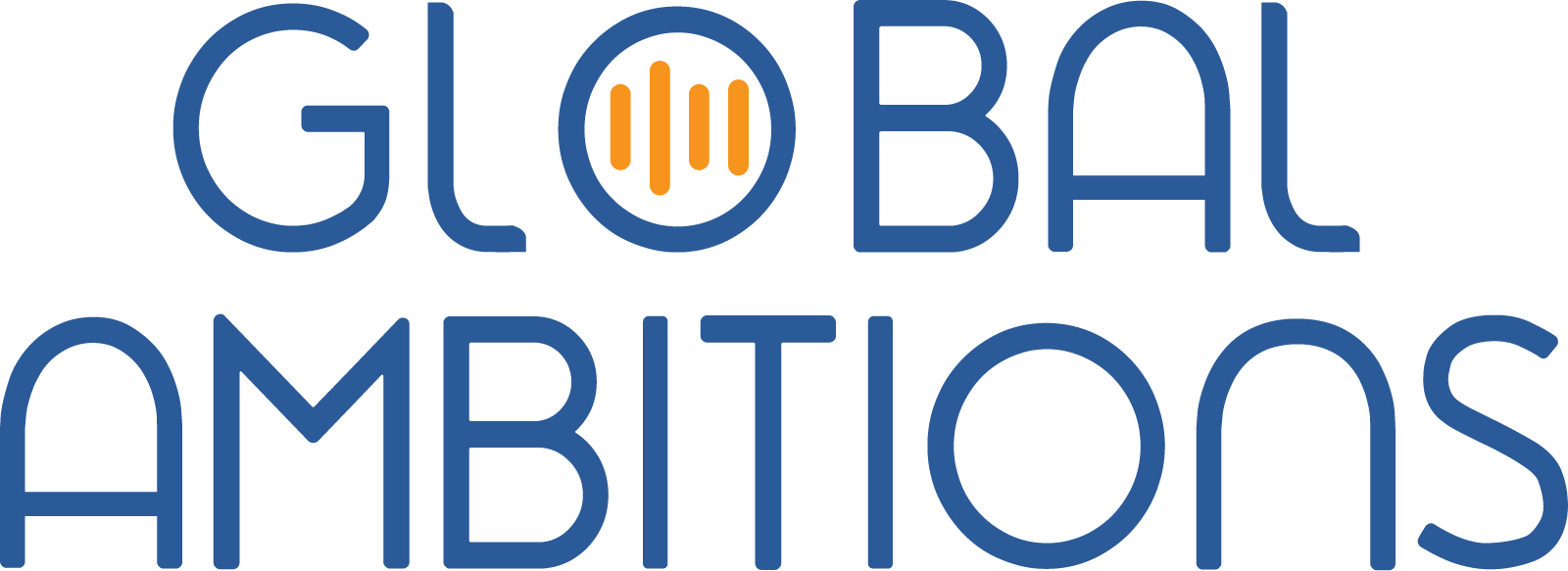With Nataly Kelly, VP of Localization at HubSpot
Below is a full transcript of this episode.
Antoine Rey
Hi everyone, my name is Antoine Rey and I’ll be your host today for this Global Ambitions podcast episode. And today my guest is Nataly Kelly, VP of Localization HubSpot, and the topic that we’re going to be talking about is native content versus localized content. Nataly, welcome to the program for the first time.
Nataly Kelly
Thank you. It’s my pleasure to be here.
Antoine Rey
We’ll get straight into the topic, but I’d be interested to find out… Like we see that trend more and more in the industry where companies are creating native content or content origination, whichever way we call it, versus translating it or along with translating it as well. Can you tell us, because I understand this is something that you guys do already at HubSpot for a number of years, what are the drivers behind this?
Nataly Kelly
Yes. We have been doing native content in multiple languages for quite a number of years at HubSpot. One of the goals and the drivers is really, you know, the traffic. If you have an SEO-driven strategy and you have a digital marketing playbook, you most likely care about attracting high-quality traffic to your site. And so if you’re going to do that, it’s very hard to do that with localized content alone.
Let’s say you have an English blog. You could localize all those blog posts, but your English blog posts ideally have been optimized for specific keywords in English. And when you localize them, you’re going to lose all of that because the person localizing them could localize them in any way that they want. And you might lose the keywords because number one, those keywords might not be the same in the other languages. In fact, most likely, they are not the same. So you might actually be picking up some traffic and picking up some keywords, but they won’t be the most important keywords for that market. So this is, I think, one of the biggest drivers of native content, at least.
Where blog posts are concerned is it’s more effective at helping people reach their goal, especially if you do an analysis and you see the top keywords that you need to target. You may not have a blog post in English that you can localize for that content because it may be something completely different from what you have in English. So I think a lot of marketers are starting to realize this, and it’s just faster in many cases to do native content for those posts than to take an English one and try to retrofit it into, you know, matching a keyword that you discover in another language. That can actually be more costly, more time-consuming.
Antoine Rey
Surely similar to other content you’ve probably tried to say, OK, we’re not going to translate those keywords. We’re going to adapt them. We’ll transcreate them, whatever it’s called. It’s really asking the person to do some market research locally to say, what’s the equivalent? Or is there an equivalent? Or change it completely for the Japanese market or the German market, right?
Nataly Kelly
Exactly. So if you want to hit the top 10 keywords on a given subject for your target audience, you may find that when you do the research, those top 10 keywords have nothing to do with the top 10 in English for your US market or your UK market. In fact, they’re going to be different by country too most likely. So you can’t even transcreate the keywords. You can, but that keyword may rank, you know, 500 in the list of important keywords for your market, and so it may be a waste of money to create it. I think that’s one big reason.
The other big driver of native content that I would mention, aside from SEO, is multimedia. Because multimedia can be very hard to localize, especially if you’re doing a lot of video content where you need people on camera to speak the language natively. And you also have to transcribe some of the content for that market because then you’re looking at, OK, do we pay someone to translate this? Adapt it, localize all the images and then hire an on-camera talent to appear on the video in another language? Or should we just hire a person who speaks that language who can help us shape the content the way we want and be on camera?
So for some multimedia purposes, it depends on what it is. Of course, some multimedia content you can easily localize, but others you might actually be better going down the path of native content, especially if you’re doing a lot of it and at scale. Yeah, and regardless of the content, I presume like whether it’s a blog, an article, or a video, the themes from one country to another that you’re trying to push forward might be very different in the states than they are like in France or in Spain, for instance as well.
Antoine Rey
Yeah.
Nataly Kelly
Like with transcreation in general, there will be some content that is going to be more or less universal. When I think about types of marketing content that can easily be localized, I think about product marketing campaigns. You’re probably not going to have to adapt a lot unless you have major gaps in functionality from one market to another if you’re doing product marketing campaigns. But if you’re doing campaigns for other purposes, it gets a little more necessary to have native content, depending on what it is.
So I would say it’s important to have native content, but that’s obviously not going to be the only thing you do. Usually, that’s a more advanced thing that companies do after they’ve been localizing and finding out where the limits of localization are. They usually have to add native content into the mix on top of localized content.
Antoine Rey
We’ve seen some companies going like on a very large scale, going native content, right? And to your point, early on, I guess it’s because they see higher traffic coming through with native content as well. So that may be one strategy there, but I guess the proof is in the pudding and you guys, are you tracking what converts the native content resource versus the localized content result? Can we talk about it in those terms?
Nataly Kelly
So I think it’s very hard to talk about it in those terms because it’s not so simple as localized content does better than native or something like that. I know a lot of companies have tried to prove that, and it usually doesn’t work because there are so many factors in play for what will convert someone from traffic on your website into a lead.
So, for example, you might have a localized blog post on the same topic as a native one, but you might have two different offers and maybe people are more likely to convert based on the offer, or where that call to action is placed on the page, or what current campaign you have running for a discount on that page. Or there just could be so many factors that will influence whether or not a page is going to convert at a high rate or not. It’s very difficult to say if it’s because it’s native or because it’s localized.
What you can say is this native post is doing a great job of getting people to this page or its ranking really high. But most companies will never have the opportunity to rank that native page against another page for the same exact keyword because they don’t want to cannibalize their traffic, so they won’t. Naturally, they won’t have two pages that are focused on the same keyword. So it’s a little bit of art and science.
You know, I think the marketers are in the best position to look at, OK, what content do we have in English? Do we think this could be repurposed for this keyword? And if not, let’s commission it to be written natively, because that is going to be kind of their call on what they think will perform better. And it could be on the topic like, you know, if I’m a Japanese marketer. And I want to rank number one for social media tools, a blog post on that, let’s say that’s the keyword that we’re focused on. I’m probably not going to just localize something that was written for the U.S. market. I probably need a person from the Japanese market to write that post. Now that post could perform really well because that person is well known in that market. It could be the author that is leading to high traffic. Right? So it might not even be the content. It could be because that person posted it on their Instagram account and they happen to have a million followers. There are so many reasons why one piece could outperform another. And it’s not always related to the content itself.
Antoine Rey
Recently I read one of your last blogs. I was glad to see you coming back on the born-to-be global blogs where you talk about market intensification. You know, when companies are like pushing hard, I guess, into a given market as opposed to market entry, I think was the other word that was in there. Is that where we see an increase in native content for that given market?
Nataly Kelly
I think that’s a good call. I hadn’t even thought about that in relation to this topic, but yes, if you are intensifying your efforts in a given market, you probably do need to have more native content. You know, it’s not just native content, it’s having a native brand presence. And sometimes native content is a strategy to achieve a stronger brand in that market through maybe commissioning writers who have a reputation, you know, and are influencers in that market. Or maybe it’s because they are closer to the market and they’re better at suggesting topics that they think will resonate locally, whereas a translator is not going to be able to do that unless they also happen to be a writer or a copywriter or, you know, do this type of work.
So I think it’s a skill that translators probably could develop more and lean into this, especially if they enjoy native copywriting. And we know there are quite a few firms who do this and have obviously vendors who do this, some vendors and contractors who do this work. But I do think it’s going to be a growing trend.
Yeah, and we certainly see that in the industry, but usually to your point, I think it’s not necessarily done by translators at all. It’s done by copywriters that have some sort of a journalistic background or certainly an internet background in their own country and are very much in tune with not only the local brands and how to speak about them but also the events associated with such a brand or business area, you know so that they can link some of that content to what’s happening in their own country and locally.
It’s kind of like you need three different people in your team for this. So you need a local marketer who can manage all of this work and decide what pieces are we going to send to which type of vendor. You need an SEO strategist who can determine which keywords are the most important for that market. You need a freelance writer or several to actually write using those keywords and linking to the right sources and doing all the work that has to be done. And you also need the translation team because there might be times when you need certain aspects of it translated or portions translated or entire posts translated. So you kind of need to build out a more robust and diverse skillset in your marketing team.
Antoine Rey
And so in your case in HubSpot who decides what gets created versus translated, I guess?
Nataly Kelly
Yes. So at HubSpot, our local marketers are the ultimate owners of their market, and they would be the ones who decide this because they know what’s best for their market and for the goals that they’re trying to achieve. I would say generally, whoever has the budget is the decider. You know, that’s kind of how I look at it is like whoever’s paying ultimately can make whatever call they like.
Antoine Rey
Follow the money.
Nataly Kelly
You know, we might not always, even agree with a decision that somebody makes for doing something natively versus localizing as localization teams. You know, we might not always think that’s the right call. But we always have to align with whatever is being decided and whoever the budgetary owner is. So if another team and I’m not just talking about HubSpot here, I’m talking in general, if any team wants to spend their money on native content, great.
Our team, the localization team will support that and we will even help train those writers like, here’s our style guide. Here’s our terminology. Here’s what we call these different things in these languages to make sure that we’re consistent with our brand and we will support them. We’ll even review the level and the quality of the linguistic work and give our opinion to help with that. We help with many things in that regard, but ultimately we are agnostic in terms of what marketers want to do in their markets. We basically say, Look, we’re not here to push localization onto you. We are here to support you.
And sometimes you let teams make mistakes and fail at things too, so that they learn for themselves. But that’s OK. I think every marketer should have the opportunity and it’s their money. They should be able to spend it how they wish. And that’s how you build a good partnership and a good team approach as you trust them to make decisions and you support them with the advice that you can. And ultimately, they’ll see if they get value for those investments. So it’s mainly really making sure that you try to maintain a global tone of voice while giving them that local creativity. That’s the ultimate goal in this case.
Antoine Rey
Great. OK, we’re coming to the end of our conversation. Thanks very much, Nataly, for joining us. This is kind of a growing topic that we’re seeing in the industry from a lot of different people there, so certainly one to watch. So thanks very much for joining us.
Nataly Kelly
My pleasure. Thank you for having me.

Nataly Kelly
VP of Localization at HubSpot




